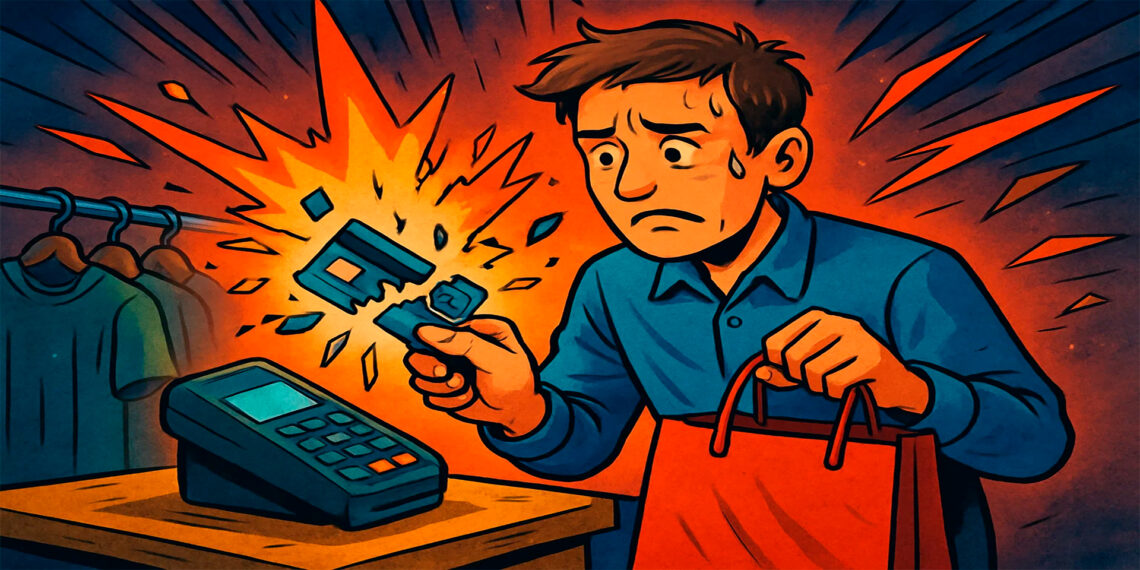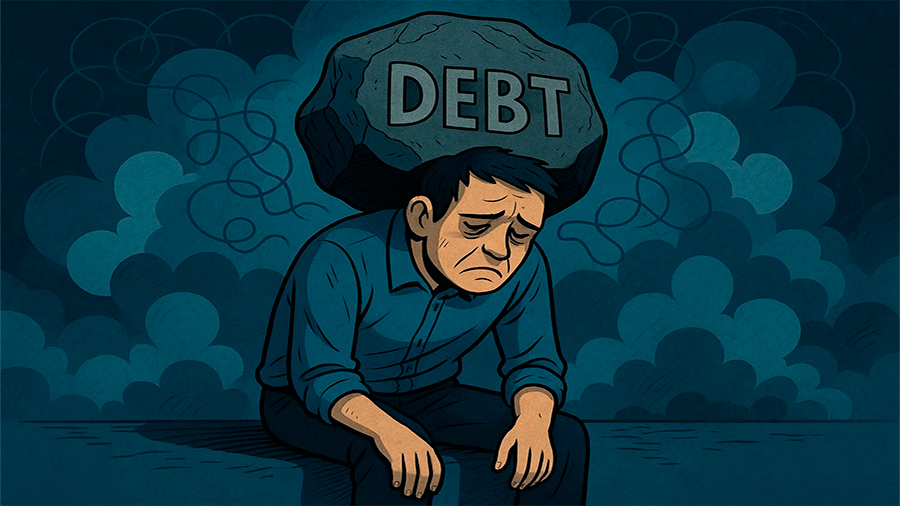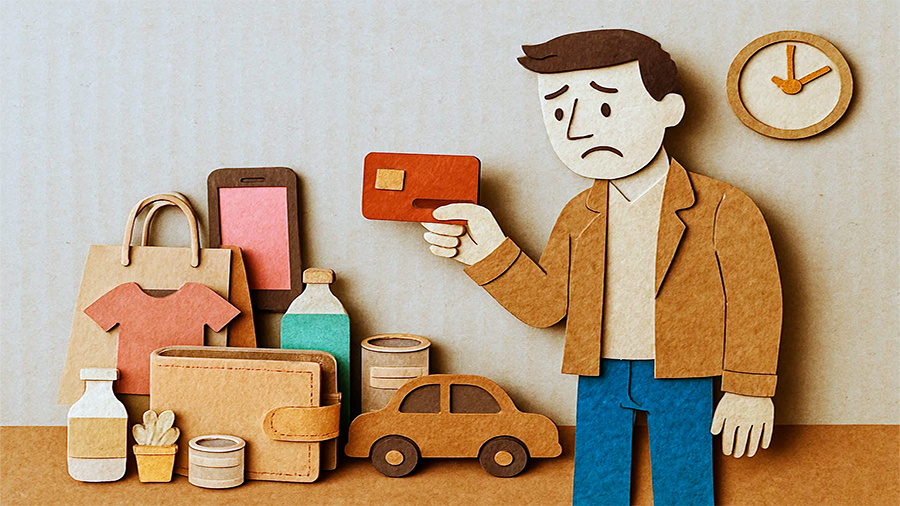
Credit Shopping: The Dangers of Living in Debt
Living on credit can feel effortless. Swipe, confirm, walk away with what you want — no immediate sacrifice, no second thoughts. But credit shopping, especially when driven by emotion or habit, transforms temporary convenience into lasting strain. What begins as casual use of revolving credit can evolve into mounting obligations, late payments, and financial paralysis. It’s not just about numbers on a statement. It’s about how borrowed money, if unmanaged, can undermine your confidence, reduce financial options, and lock you into a cycle where earnings chase past purchases instead of building your future.
The Psychology Behind Credit Shopping
Instant gratification drives many credit shopping decisions. You’re not alone if you’ve ever made a purchase just to feel better, celebrate, or reward yourself. Credit amplifies these impulses. Unlike cash, which is finite and tactile, credit feels limitless — until the bill arrives. Behavioral economics shows that consumers spend up to 83% more when using credit cards instead of cash. This illusion of affordability lowers your resistance, encouraging you to buy beyond your means and justify expenses that wouldn’t feel rational with physical money.
The reward mechanisms built into many credit cards worsen this tendency. Cashback, points, and perks create the illusion of value — but they rarely offset the true cost of interest or fees. Emotional spending becomes easier to rationalize when the card offers “something back.” Yet, these small returns often blind you to the real trade-offs. Credit shopping isn’t about what you gain — it’s about what you postpone: savings, emergency funds, and long-term goals.

How Revolving Credit Traps Build Over Time
Revolving credit allows you to borrow continuously within a set limit as long as you make minimum payments. That flexibility can seem practical — until balances start compounding. Credit cards often carry interest rates between 18% and 29%, and if you’re paying only the minimum, the majority of your payment covers interest, not principal. A $3,000 balance at 24% APR with only minimum payments could take over 10 years to repay, costing thousands in interest alone.
Credit utilization — the ratio of your balance to your total limit — directly impacts your credit score. If your utilization exceeds 30%, lenders see you as a higher risk. The irony is that continued credit use to stay afloat weakens the very score you may need for future loans. It becomes a vicious loop: borrowing more to manage old debt while your rating drops, and new credit becomes more expensive or inaccessible.
Compounding Interest and the Debt Spiral
Compounding interest means you’re charged interest not just on your original purchases, but on previous interest as well. The longer you carry a balance, the more you owe for past borrowing. This mathematical snowball makes it nearly impossible to dig out without aggressive payments — yet most borrowers underestimate how quickly the cost grows. Over a year, even a modest balance can balloon if left unchecked.
Impulsive Spending and Lifestyle Inflation
It’s easy to mistake credit as income. When your lifestyle expands to match your available credit instead of your actual earnings, you’re living above your means. This is lifestyle inflation — a common byproduct of impulsive spending. A new phone, upgraded wardrobe, more dinners out — they feel harmless individually. But when funded by credit, they create a pattern of dependency that’s hard to reverse.
You don’t need to buy luxury goods to fall into this trap. Even regular purchases — groceries, gas, streaming subscriptions — can become dangerous when consistently placed on credit without full monthly payoff. Over time, what should be basic expenses become contributors to long-term debt. The more normalized the habit, the harder it is to break.
Easy Access to Loans Fuels Risky Behavior
Buy now, pay later (BNPL), instant credit approvals, and zero-interest offers have made access to debt almost frictionless. While these tools serve a purpose, they also reduce your sense of cost and consequence. A 2023 survey showed that 47% of BNPL users missed at least one payment. This isn’t a tech problem — it’s a budgeting issue disguised by convenience.
Many platforms don’t conduct deep credit checks, meaning borrowers can accumulate multiple loans across providers without a unified view of what they owe. This creates “phantom debt” — amounts you forget or underestimate until they pile up. Credit shopping spreads risk across multiple sources, making it harder to track, control, or resolve. When visibility fades, accountability drops with it.
Hidden Costs of Easy Credit
- Late payment penalties often exceed 30% APR after a missed due date.
- Deferred interest offers charge retroactive interest if not paid within the promo period.
- Multiple loan accounts dilute your attention and increase the risk of missed payments.
Financial Stability Erodes Quietly
Living in debt doesn’t always feel dramatic. Often, it starts silently — missed savings contributions, skipped emergency fund deposits, postponed investments. You may still pay your bills, but you’re no longer building. You’re maintaining. Over time, that maintenance becomes stagnation. When an emergency hits — medical bills, car repairs, job loss — you have no cushion. You rely on more credit, compounding the problem.
Financial health isn’t just about income — it’s about control. The deeper you go into debt, the less control you have over your financial future. Monthly payments dictate your budget. Options shrink. You may avoid health care, delay family decisions, or stay in an unsatisfying job — not because you want to, but because you’re trapped by your financial obligations.

Repayment Stress and Mental Burden
Debt isn’t just a numbers game — it affects your mind, too. Chronic debt has been linked to increased anxiety, depression, and even physical health problems. A 2022 study found that 66% of Americans with credit card debt experience frequent stress about their finances. This mental burden isn’t abstract. It affects your focus at work, your relationships, and your ability to make sound financial decisions.
Shame, fear, and denial are common reactions — but they don’t solve the problem. In fact, they make it worse. The longer you ignore debt, the more it controls your decisions. You might avoid opening statements, delay asking for help, or skip essential expenses. These choices reinforce instability and prolong the cycle.
How to Regain Control from Credit Dependency
Escaping the debt cycle requires strategy, not just sacrifice. The first step is transparency — listing every account, balance, and interest rate. Only then can you decide where to focus. Debt snowball (paying off small balances first) and debt avalanche (targeting highest interest first) are two methods proven to restore momentum. Both work if you stay consistent.
Budgeting must become proactive, not reactive. Allocate income toward essential needs, savings, and debt payments — in that order. Reduce credit card use to emergencies or planned expenses paid in full. Tools like automatic transfers, budgeting apps, and envelope systems help enforce discipline. But the real shift happens in mindset: seeing credit as a tool, not a crutch.
When to Seek Help
If minimum payments feel overwhelming, or your debt keeps growing, consider professional guidance. Credit counselors, debt management plans, or financial coaches can help consolidate payments, negotiate rates, and build a sustainable path forward. Seeking help isn’t weakness — it’s an investment in stability.
The Conclusion
Credit shopping, while seductive in the short term, creates invisible costs that accumulate with time. The comfort of buying now often conceals the long-term consequences of living in debt. Emotional spending, easy credit access, and poor repayment habits transform your income from a resource into a recovery mechanism. By recognizing the traps and shifting toward intentional behavior, you protect your financial autonomy, peace of mind, and future opportunities. Debt should be a tool you use — not a trap you live in.
